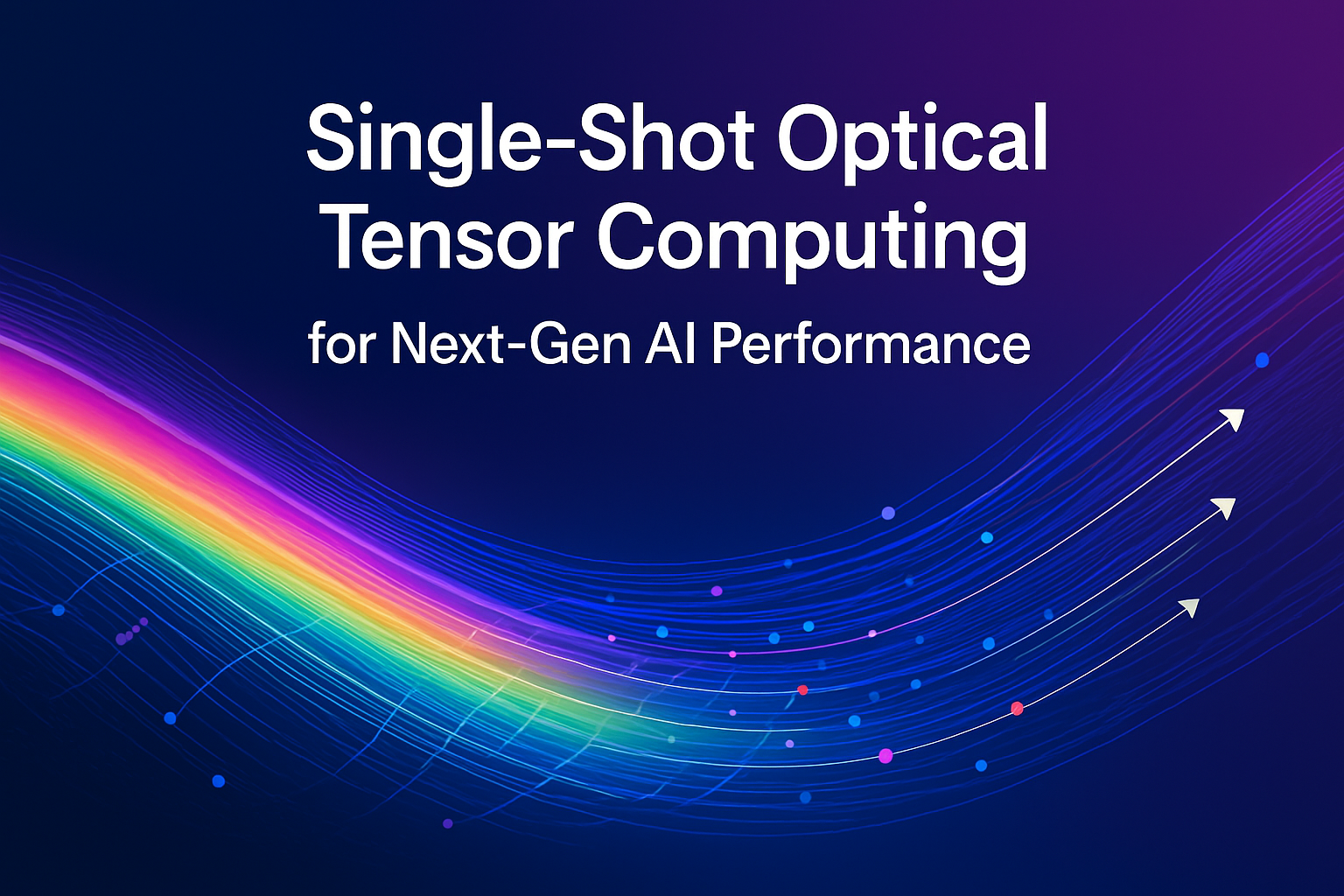
Single-Shot Optical Tensor Computing for Next-Gen AI Performance
Single-shot optical tensor computing is reshaping how AI systems might process massive datasets in the coming years. Researchers are exploring how light can replace electronic circuits to deliver faster, more efficient computational performance. As AI models demand more power and speed, optical methods offer a path that avoids the limitations of traditional GPUs.
Optical Tensor Processing for AI Acceleration
Modern AI relies heavily on tensor operations for image analysis, language understanding, and pattern recognition. Electronic processors handle these tasks in multiple sequential steps. Light, however, performs many of these operations at once due to its natural physical interactions. This parallel behavior increases speed, lowers energy use, and improves scalability.
A team led by Dr. Yufeng Zhang at Aalto University developed a method that completes complex tensor calculations in a single movement of light. Their technique, called single-shot optical tensor computing, removes the delays caused by electronic switching. The system performs matrix multiplication, convolution, and other AI functions at the speed of light using structured light fields.
Encoding Data Into Light Waves
The researchers embedded numerical information into the amplitude and phase of light waves. When these waves move through the optical system, they automatically perform mathematical transformations. Each interaction reshapes the light field in a way that mirrors the required computation.
Multi-Wavelength Tensor Processing
The team expanded the system by using several wavelengths of light. Each wavelength acts as a separate processing channel. This allows the system to perform higher-order tensor operations in parallel without increasing energy consumption. The result is a scalable, power-efficient optical computing framework.
Passive and Scalable Optical Framework
One of the strongest advantages of single-shot optical tensor computing is its passive operation. The system does not depend on active electronics during the computation. Light interactions perform the necessary tasks on their own, which reduces heat and energy usage. The research team noted that the method can fit into a wide range of optical platforms, including photonic chips designed for future AI systems.
Toward a New Generation of Light-Based AI Hardware
Researchers now aim to adapt the method to hardware already used by major technology companies. This will make it easier to introduce optical processors without redesigning existing systems. Dr. Zhang expects single-shot optical tensor computing to reach practical implementation within three to five years.
Future Applications Across Industries
Light-based AI processors could offer major benefits in any field that depends on large-scale computations. These include medical imaging, autonomous systems, language models, scientific simulations, and real-time data analysis. Each of these areas requires fast tensor operations that benefit from the speed of light and reduced power consumption.
A Step Toward Ultra-Fast AI Systems
The development of this optical method demonstrates how photonics can transform the future of computation. As AI workloads grow, electronic hardware faces clear physical limits. Light-based processors offer a way to achieve higher performance while maintaining efficient energy use. The continued progress of single-shot optical tensor computing marks a significant step toward a new generation of optical AI architectures designed for speed, scalability, and long-term efficiency.
Also read: Human Brain Computers: The Future of Biocomputing.






